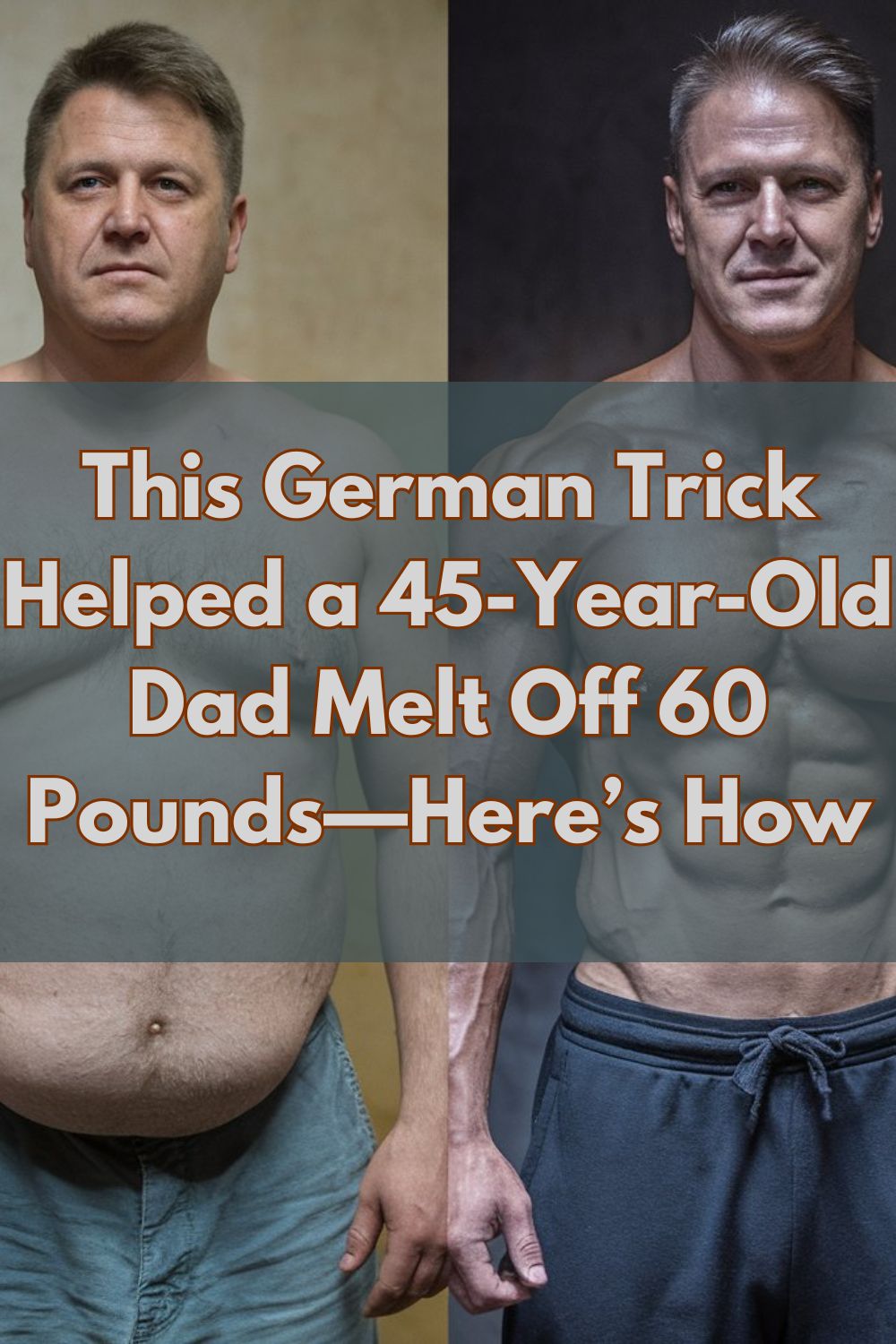Let’s be honest—losing weight after 40 can feel impossible. Slower metabolism, higher stress levels, and less time for workouts make it easy to give up before seeing results. But what if the solution wasn’t a trendy diet, extreme cardio, or complicated supplements, but a simple method inspired by German wellness habits?
This approach helped Mark, a 45-year-old father of two, lose 60 pounds and keep it off—without obsessive calorie counting, endless gym hours, or fad diets. It’s realistic, sustainable, and grounded in science-backed principles.
What Is the German Trick?
The “German trick” combines three key elements: time-restricted eating, protein-rich meals, and NEAT (non-exercise activity thermogenesis). It’s about working with your body’s natural rhythm rather than fighting it.
Mark learned it from a colleague who lived in Berlin and noticed how locals stayed lean without obsessing over food. Curious, he tried it—and saw results faster than he expected.
1. Time-Restricted Eating: Structure Over Starvation
Mark followed 16:8 intermittent fasting, eating all meals within an 8-hour window (typically 12 p.m. to 8 p.m.) and fasting for 16 hours.
Benefits include:
- Improved fat burning during fasting hours
- Better insulin regulation
- No constant hunger or energy crashes
He drank water, black coffee, or tea during the fasting window and enjoyed satisfying, structured meals later. Consistency—not perfection—was the key.
2. Protein-Forward Meals: Fuel, Fullness, and Fat Loss
Protein-rich foods help preserve muscle, boost metabolism, and control appetite. Every meal Mark ate included a solid protein source, such as:
- Grilled chicken or turkey with vegetables
- Greek yogurt with berries and flaxseed
- Eggs with spinach and whole-grain toast
This simple rule stabilized his energy, reduced cravings, and supported lean muscle retention.
3. Move More Without the Gym: NEAT Lifestyle
Instead of forcing intense workouts, Mark focused on NEAT—the calories burned through daily activity:
- Walking after meals
- Taking stairs instead of elevators
- Light stretching or resistance band exercises at his desk
- Playing actively with his kids
These small, consistent movements built a fat-burning routine without burnout.
4. Whole Foods Over Processed Snacks
Mark shifted to a whole-foods diet, minimizing processed foods, sugary drinks, and long ingredient lists. Inspired by German home-cooked meals, he chose:
- Fresh vegetables
- Lean meats and fish
- Whole grains
- Healthy fats like olive oil and nuts
This naturally reduced calories, improved digestion, and decreased inflammation.
5. Support Gut Health: Fermented Foods and Fiber
A healthy gut aids weight management, mood, and immunity. Mark added:
- Sauerkraut, kefir, and probiotic-rich yogurt
- High-fiber fruits, vegetables, and whole grains
Better digestion led to less bloating, improved nutrient absorption, and fewer cravings.
6. Smart Sleep and Stress Habits
Routine matters. Mark prioritized:
- Regular bedtime
- Limited screen time before bed
- Journaling and deep-breathing exercises
These habits lowered cortisol (linked to belly fat), improved energy, and helped his body recover overnight.
7. Hydration With Purpose
Starting the day with a glass of water and keeping a refillable bottle handy ensured he stayed hydrated, which supports metabolism, digestion, and appetite control.
Why It Works
The German trick isn’t about extremes—it’s about structure, consistency, and lifestyle tweaks that fit into real life. Mark lost 60 pounds without dieting obsessively or punishing himself in the gym, and the results have lasted.

